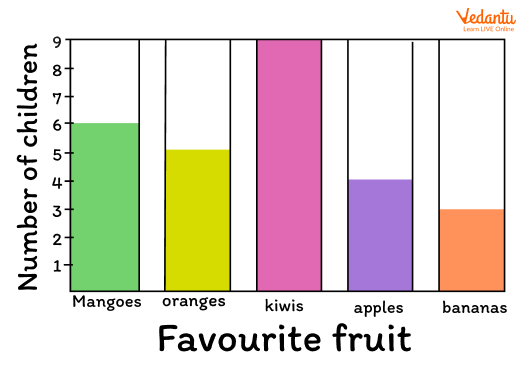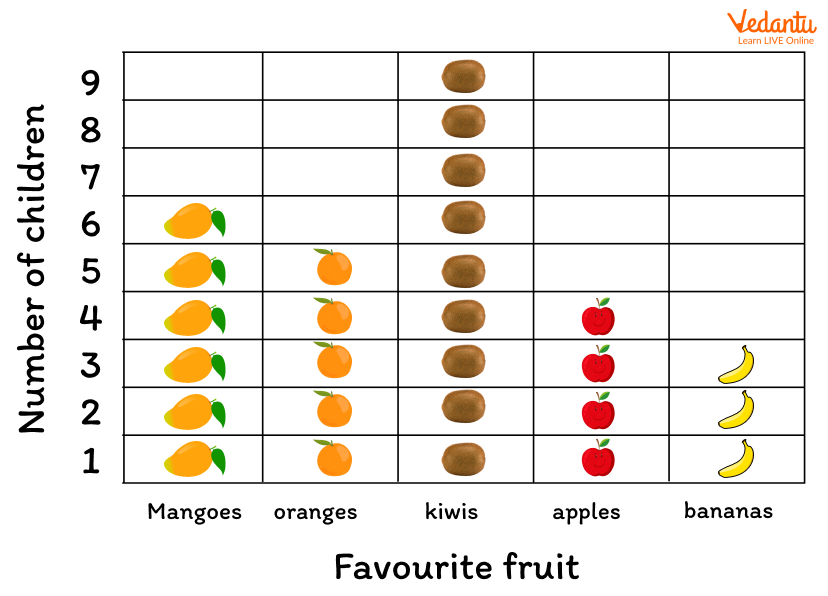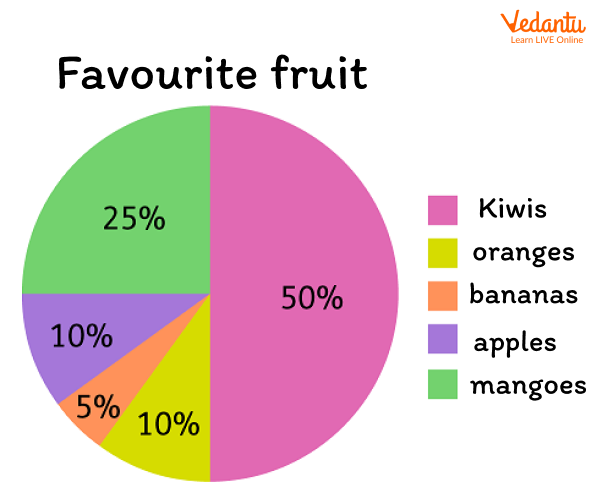




How to Solve Year 3 Statistics Questions with Everyday Examples
An Introduction to Year 3 Statistics
Do you know what statistics is? Statistics is a branch of Mathematics where we collect, analyse, understand and represent data. What is data? It is a collection of information, could be numbers, facts, etc., that is assembled through measurement, questioning or observing. Data in statistics are collected through experiments and surveys. It is used in different fields for dealing with data and is helpful for storing information in simple form.
Children are able to identify and interpret different types of graphs at the age of 7 to 8 years. In this article, we will learn about statistics for kids who are in the learning phase of year 3.
How Can You Represent Data in Statistics?
Data can be presented in different ways. Some main methods of data presentation are given below.
1. Bar Graph
A bar chart is used to represent data which is distributed such as the number of students in a class, number of fruits in a basket, etc. Hence, a bar graph is used where data can only have a limited number of possible values. In a bar chart, data is represented by the lengths of a set of bars. Some gaps are usually present between the bars. The bars in such graphs can be drawn vertically or horizontally. For example, a bar graph of the number of children vs favourite fruit is drawn below. In the following bar graph, data of different fruits are drawn as bars.

Example of Bar Graph
2. Pictogram
A pictogram is also used for the representation of data in statistics. It is also known as pictographs or picture graphs. Pictures are used in pictograms to show quantities. A picture is used to show one thing or a number of things. The same example of the number of children vs favourite fruit example is shown below in the form of a presentation of a pictogram. Here, pictures are used to represent the quantities, that is, which fruit is most liked by the maximum number of children.

Example of Pictogram
3. Pie Chart
Data or information is represented in a circle in a pie chart. The slices in a pie chart or different-sized sectors of the circle stand for the different quantities they represent. For example, the slices of a pie chart can represent the percentage of the children who like different fruits. If the same example of the number of children and their favourite fruits data is drawn in the form of a pie chart, it will look like the following figure. The one with the highest percentage or great area of slice has the most liked fruit.

Example of Pie- Chart
The Collection of Information Through Data
Different types of information can be gathered from bar graphs, pie charts, pictographs etc. Interpretation of data is also an important part of statistical analysis. It provides useful information that has been stored in the form of bars and graphs. In the above example, the favourite fruits of children are analysed such as what percentage of kids like apples, bananas, oranges, grapes and apples.
Conclusion
Statistics is used where data is important to store in an easy way. The above article is useful for kids in order to understand the concept of statistics. Bar graph, pictograph and pie chart is discussed in the article with help of examples.
FAQs on Year 3 Statistics Made Easy for Ages 7–8
1. What is statistics for a Year 3 student?
For a Year 3 student (age 7-8), statistics is the simple and fun process of collecting information, called data, and then organising it in a way that is easy to understand. Think of it as being a detective who gathers clues (data) and arranges them to solve a puzzle, like finding the most popular cartoon in your class.
2. Why is it important for 7-8 year olds to learn about statistics?
Learning statistics at this age is important because it helps develop critical thinking skills. It teaches children how to make sense of the world around them by using information. For example, by collecting data on favourite sports, a child can understand which game is most popular and why. This is a basic skill for making informed decisions later in life.
3. What are the main topics in Statistics for Year 3?
In Year 3, the key topics in statistics, often called 'Data Handling', focus on the basics of data representation. As per the CBSE/NCERT curriculum for 2025-26, students learn about:
- Collecting simple data sets.
- Recording data using tally marks.
- Representing the collected data visually using a pictograph (with pictures).
- Showing the same data using a bar graph (with rectangular bars).
- Interpreting the information presented in these charts to answer simple questions.
4. How can statistics be explained with a simple, real-life example?
Imagine you want to find out the favourite fruit among your friends. You can ask each friend and put a tally mark next to 'Apple', 'Banana', or 'Orange'. After counting the tally marks, you can draw a bar graph where the tallest bar shows the most loved fruit. This entire process, from asking questions to drawing the chart, is a real-life example of using statistics.
5. What is the difference between a pictograph and a bar graph?
A pictograph uses pictures or symbols to show data; for example, one drawing of a book could represent one book read. A bar graph, on the other hand, uses rectangular bars of different heights to show the same information. The main difference is the visual style: pictographs use images while bar graphs use bars to compare quantities.
6. How do tally marks help in collecting data?
Tally marks are a very fast and efficient method for keeping count while you are still collecting information. For each item you count, you draw a single vertical line (|). To make counting easier, every fifth tally mark is drawn as a diagonal line across the previous four (like ||||). This creates bundles of five, making it simple to add up the total count accurately at the end.
7. What is the difference between a normal question and a statistical question?
A normal question typically has only one correct answer. For example, “What is your teacher's name?”. A statistical question is a question that you expect to get many different answers for, and you are interested in the variety and patterns in those answers. For example, “What are the favourite subjects of students in my class?” requires collecting data from multiple people to answer.
8. What other major topics are covered in the Year 3 Maths syllabus?
According to the CBSE syllabus for 2025-26, besides Statistics (Data Handling), a Year 3 student will learn several other important topics. These include:
- Numbers and operations (working with numbers up to 999, addition, subtraction).
- Multiplication and Division (basic concepts and tables).
- Introduction to Fractions.
- Concepts of Money, Measurement (length, weight, capacity), and Time.
- Basic Geometry, focusing on identifying 2D and 3D shapes.

















